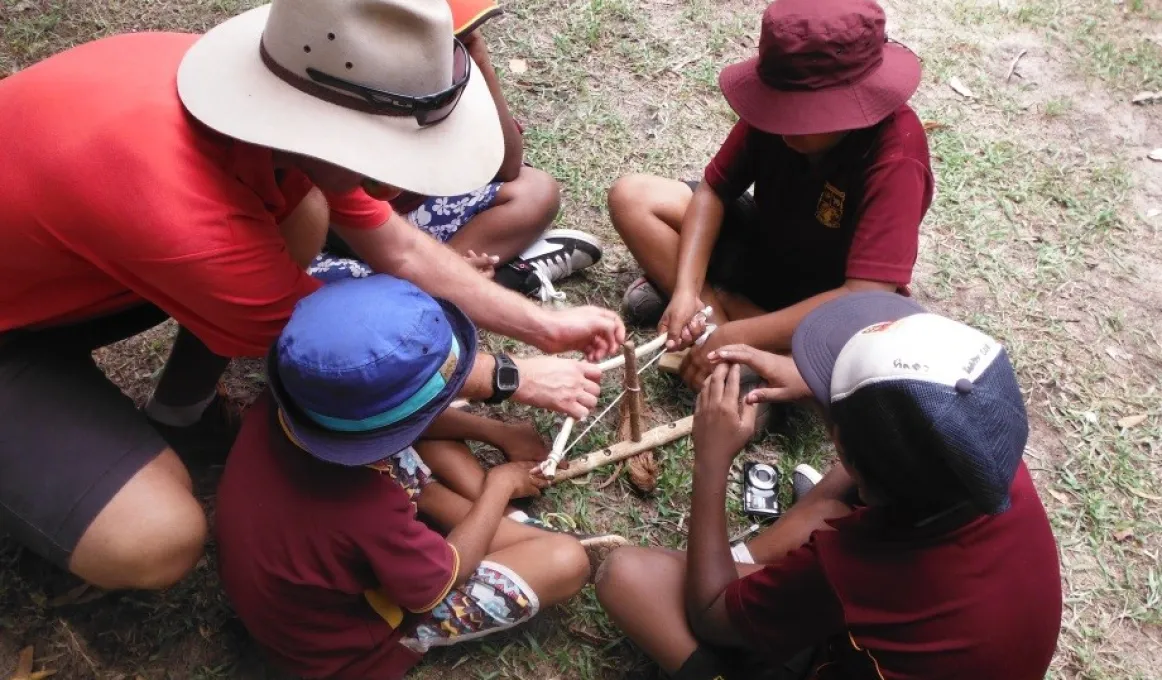Engaging kids at school through Indigenous culture

The MacFarlane Primary School in Katherine, Northern Territory increased school attendance by engaging students through the introduction of an Indigenous cultural program which presents subjects such as science and geography from an Indigenous perspective.
The MacFarlane Primary School in Katherine, Northern Territory, is proving that a student engaged with the subjects, is more likely to attend school.
The school, which educates approximately 250 students of whom 90% are Indigenous, receives students from many backgrounds and circumstances. These include the urban areas of Katherine, Aboriginal hostels, women’s shelters, town camps and also from surrounding communities such as Borroloola, Timber Creek, Ngukurr, Minyerri and Yarralin.
In 2010 the school introduced an Indigenous cultural program and employed a male and female coordinator to work with every class, mentoring both class teacher and students for a three week block each term.
Each day’s focus of study is determined in a planning session with the class teacher, the cultural coordinators and a member of the school’s leadership. Today all units of the Australian curriculum such as science, history, English or geography are seen from an Indigenous perspective.
School principal Marie Bryans-Chaplin said the program has a clear and positive effect on attendance.
“Behavioural incidents decline during the time the students participate in the cultural unit which supports and encourages increased attendance,” Marie said.
“Additionally, responses to student and parent perception surveys were positive regarding the program.”
The learning process is often taken out into the field where students get a first-hand opportunity to engage with their heritage whilst exploring scientific principles.
“The program regularly goes out into the Katherine and wider community and engages with various stakeholders and Aboriginal organisations,” Marie said.
“We have speakers come into the school on a regular basis and also the students have the opportunity to meet Indigenous role models who talk about their education and employment and the importance of good attendance.”
“It is obvious that the students become active listeners at this time, show respect to adults and each other, engage in their learning and of course, have a lot of fun. “
At the completion of each unit, parents are invited to attend a parent’s day to witness their children’s learning in a video presentation. They are offered a DVD to take home which includes all of the activities completed during the three weeks.
“The program gives staff the ability to relate to the students’ culture and heritage,” Marie said.
“In this way they build stronger relationships with students and their families and they receive first-hand knowledge of Indigenous culture. All teachers comment that student engagement and attendance improves when participating in the culture program. Students know that their culture is valued.”
Find out more
The Australian Government is committed to improving education outcomes and opening pathways to stable careers for young Aboriginal and Torres Strait Islander people.